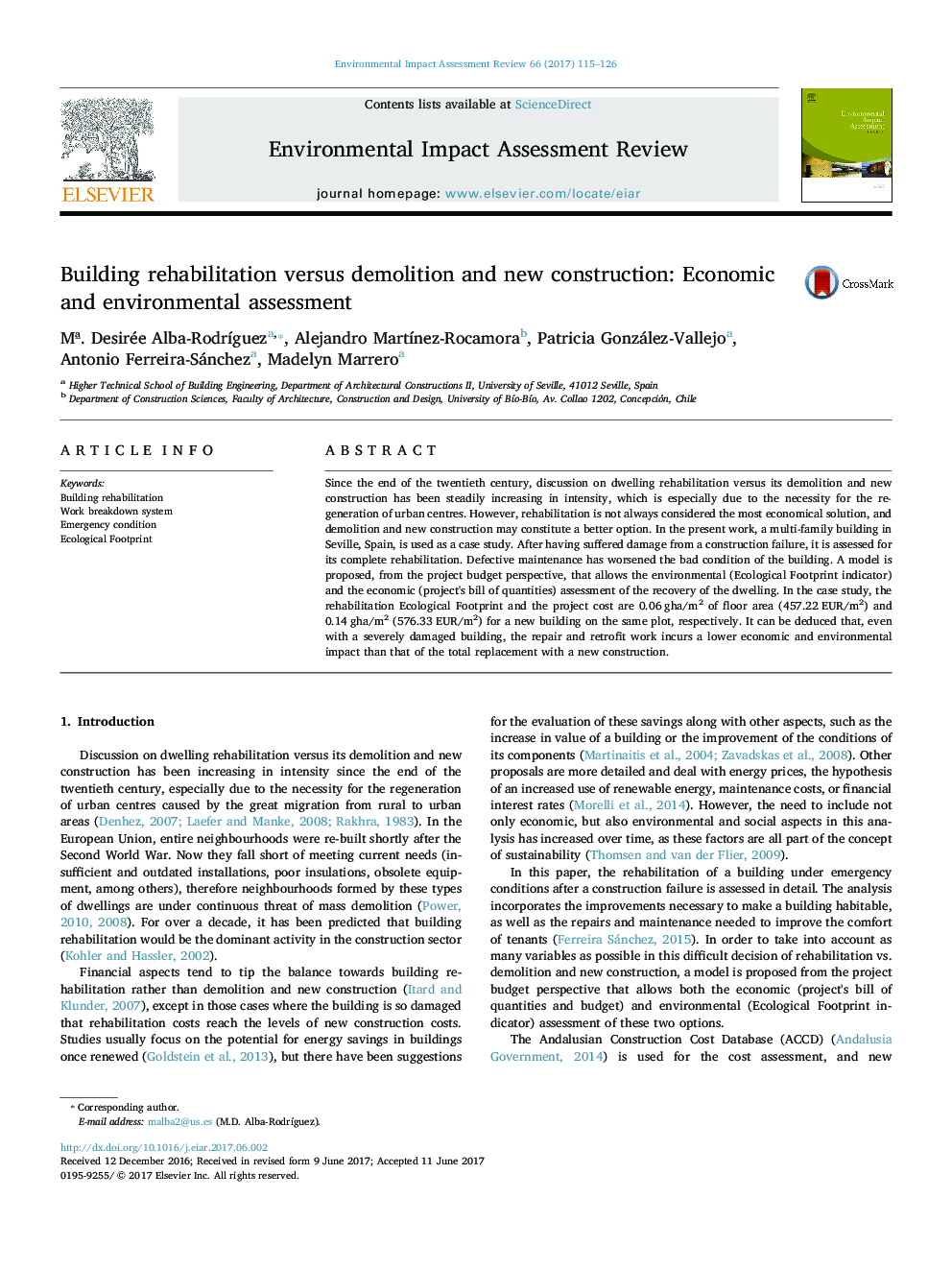| Article ID | Journal | Published Year | Pages | File Type |
|---|---|---|---|---|
| 5115635 | Environmental Impact Assessment Review | 2017 | 12 Pages |
Abstract
Since the end of the twentieth century, discussion on dwelling rehabilitation versus its demolition and new construction has been steadily increasing in intensity, which is especially due to the necessity for the regeneration of urban centres. However, rehabilitation is not always considered the most economical solution, and demolition and new construction may constitute a better option. In the present work, a multi-family building in Seville, Spain, is used as a case study. After having suffered damage from a construction failure, it is assessed for its complete rehabilitation. Defective maintenance has worsened the bad condition of the building. A model is proposed, from the project budget perspective, that allows the environmental (Ecological Footprint indicator) and the economic (project's bill of quantities) assessment of the recovery of the dwelling. In the case study, the rehabilitation Ecological Footprint and the project cost are 0.06Â gha/m2 of floor area (457.22Â EUR/m2) and 0.14Â gha/m2 (576.33Â EUR/m2) for a new building on the same plot, respectively. It can be deduced that, even with a severely damaged building, the repair and retrofit work incurs a lower economic and environmental impact than that of the total replacement with a new construction.
Keywords
Related Topics
Physical Sciences and Engineering
Energy
Renewable Energy, Sustainability and the Environment
Authors
Mª. Desirée Alba-RodrÃguez, Alejandro MartÃnez-Rocamora, Patricia González-Vallejo, Antonio Ferreira-Sánchez, Madelyn Marrero,
